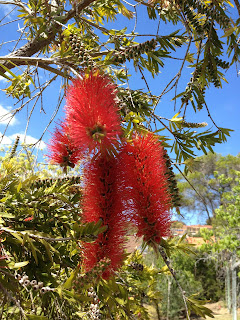@HealthMed Recent news concerns infection alerts, raising
awareness of the risks of overweight, and ethics of using social networking to
undermine efforts to combat drinking and driving.
'Grabbable gut' as clue to being overweight.
How do
you engage the public in long-term interest in benefits of keeping weight in
check? The recent ‘LiveLighter’ Australian anti-obesity campaign campaign, supported by the The Heart Foundation, aims
to improve recognition of overweight as a personal problem. The campaign includes dramatic pictures of internal excess fat, accompanied by images of a man who does not appear realise he has a weight problem - with the reminder
that if you can 'grab your gut' ie have enough spare loose abdominal flesh to
grasp by the handful, there is a problem. In other cultures, 'spare tyre', or
the advice 'if you jump up and down and it bounces you're overweight' ... have similar
resonance.
Some
critics have complained that the campaign further lowers self-esteem in those
who already feel under psychological threat - or simply claim that these messages won't work. This overlooks the obvious - increasing failure to perceive that a given build is excessive, with overweight becoming the norm, both in developed and less developed
countries.
Key
challenges are more about how to raise awareness that weight is even a problem,
why that matters, and what initial and long term sustainable measures will help
to keep weight in check and avoid preventable long-term cardiovascular and
non-cardiovascular serious health risks.
Raising
public awareness is all the more pressing with recognition, for example from
recent data from the US NHANESIII study presented at the European Society of Cardiology Congress in Munich, that relative overweight [based on increased
waist-hip ratio] is more important than raised weight based on body mass
index, for predicting increased risk of serious heart disease and other
causes of premature death.
In
parallel with public health messages about the risk of drinking with any
alcohol in the blood, random alcohol tests are being used in Western Australia to
discourage drivers from drinking.
Several
different initiatives have been used in other countries. In France, by a new 2012 law breathalyzer kits are compulsory for all cars. In Sweden and the USA, alcohol ignition interlocks have been used for drink drinking offenders, and several other countries have piloted these schemes involving a breathalyzer coupled to the ignition – if any alcohol is detected, the
car’s ignition is inactivated. Elsewhere, a timed arithmetic test is used as
barrier to starting the car, based on the adverse effects of alcohol on brain
function of even modest alcohol intake. Rather than accepting help not to drive
when potentially a danger to pedestrians and other road user, some drunk
drivers have been reported to use a friend or even pay a sober contact to beat
the tests.
In
Australia, booze bus spotters have been posting messages on social networking
sites to warn drivers of its location. Worrying not least from the question how
and when drivers are accessing these messages.
Rise in ’Ross River cases’
RossRiver virus, an RNA alpha virus and member of the togaviridae family of viruses, is spread by mosquito bites and is endemic in Australia and several South Pacific islands. The illness was first reported in 1928. The main reservoir animals appear to be kangaroos and wallabies.
The
features include rash and flu-like syndrome, the acute features usually settling
within 12 months, with however some of those infected by the virus reporting subsequent
long-term ME like debility.
Why now
provide an update on the virus? Public health reports indicate a rapid ~5-fold increase
in numbers of cases of Ross River disease in Western Australia over the past 3
years from, 332 in 2009-2010 up to 1570 in 2011-2012. This rapid increase has
been attributed to increased numbers of the vector - mosquitos - due to a
series of La Niña events [coupling of Pacific Ocean currents with weather patterns]. This has lead to an increase in rainfall in parts of Australia, the resulting humid conditions
and increase in ground-water favouring greater breeding by mosquitos.


No comments:
Post a Comment